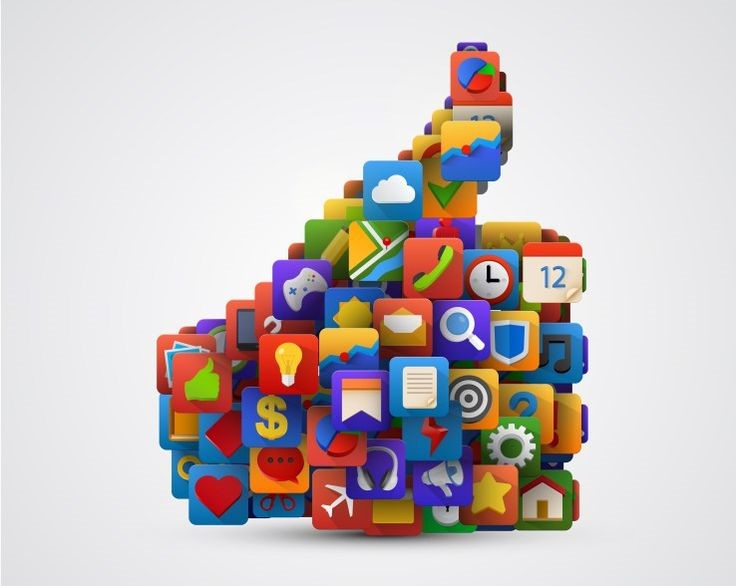Technology Explained
The Rise of Ephemeral Content: Stories Snaps Trends

In the ever-evolving landscape of digital communication, one trend has stood out in recent years: the rise of ephemeral content. From Instagram Stories to Snapchat Snaps, these fleeting forms of media have captured the attention and engagement of millions worldwide. This article delves into the growth of ephemeral content, exploring its origins, popularity, and implications for the future of digital communication.
The Origins of Ephemeral Content
Ephemeral content, by definition, is media that is available for a limited time before disappearing. The concept gained traction with the launch of Snapchat in 2011. Snapchat’s unique selling proposition was its temporary nature; messages, photos, and videos sent through the app would vanish after being viewed. This was a stark contrast to the permanence of traditional social media posts on platforms like Facebook and Twitter.
Snapchat’s success paved the way for other social media giants to incorporate ephemeral content into their platforms. Instagram introduced Stories in 2016, followed by Facebook and WhatsApp with their versions of Stories. Even LinkedIn and YouTube have experimented with ephemeral content features.
The Popularity of Ephemeral Content
The growth of ephemeral content can be attributed to several factors:
1. Authenticity and Spontaneity
This content encourages users to share more genuine and spontaneous moments. Since the content is temporary, there is less pressure to curate and perfect every post. This fosters a sense of authenticity that resonates with audiences, particularly younger demographics.
2. FOMO (Fear of Missing Out)
The temporary nature of this content creates a sense of urgency. Users are more likely to engage with content that they know will disappear soon. This “fear of missing out” drives higher engagement rates compared to permanent posts.
3. Ease of Use
Platforms have made creating and sharing this content incredibly user-friendly. With just a few taps, users can add filters, stickers, text, and other enhancements to their photos and videos. This ease of use has contributed significantly to the widespread adoption of ephemeral content.
4. Privacy and Security
The temporary nature of this content offers a layer of privacy and security. Users feel more comfortable sharing personal moments, knowing that the content will not be permanently stored or publicly accessible. This has been a key factor in the growth of ephemeral content, especially among privacy-conscious users.

Picture by: Yandex.com
The Impact on Marketing and Advertising
The growth of ephemeral content has not gone unnoticed by marketers and advertisers. Brands have quickly adapted to this trend, leveraging the unique advantages of this content to connect with their audiences.
1. Increased Engagement
This content provides an excellent opportunity for brands to engage with their audience in real-time. Features like polls, quizzes, and Q&A sessions can be integrated into Stories to foster interaction and engagement.
2. Storytelling
Brands can use ephemeral content to tell compelling stories that resonate with their audience. By sharing behind-the-scenes moments, product launches, or customer testimonials, brands can create a narrative that builds a deeper connection with their audience.
3. Limited-Time Offers
The temporary nature of ephemeral content is perfect for promoting limited-time offers, flash sales, and exclusive deals. This creates a sense of urgency and encourages immediate action from the audience.
4. Influencer Collaborations
Influencers have embraced ephemeral content, using it to share authentic and relatable moments with their followers. Brands can collaborate with influencers to reach a wider audience and build credibility through authentic endorsements.
The Future of Ephemeral Content
As ephemeral content continues to grow, several trends and developments are worth noting:
1. Enhanced Features
Social media platforms are constantly innovating, adding new features and tools to enhance the ephemeral content experience. Augmented reality (AR) filters, interactive stickers, and advanced editing tools are just a few examples of how platforms are evolving to keep users engaged.
2. Integration with E-commerce
The integration of e-commerce features into ephemeral content is a growing trend. Platforms like Instagram and Snapchat have introduced shopping features that allow users to purchase products directly from Stories. This seamless integration of content and commerce is likely to become more prevalent in the future.
3. Cross-Platform Sharing
As users become more accustomed to ephemeral content, the demand for cross-platform sharing is increasing. Platforms are exploring ways to make it easier for users to share ephemeral content across different social media channels, enhancing the reach and impact of each post.
4. Data and Analytics
The growth of ephemeral content has also led to advancements in data and analytics. Brands and marketers can now access detailed insights into the performance of their ephemeral content, allowing them to refine their strategies and maximize engagement.
Conclusion
The growth of ephemeral content is a testament to the ever-changing nature of digital communication. From its origins on Snapchat to its widespread adoption across multiple platforms, ephemeral content has transformed the way we share and consume media. Its popularity can be attributed to its authenticity, ease of use, and ability to drive engagement.
For brands and marketers, this content offers a unique opportunity to connect with audiences in real-time, tell compelling stories, and promote limited-time offers. As social media platforms continue to innovate and integrate new features, the future of ephemeral content looks promising.
In conclusion, the rise of ephemeral content is more than just a trend; it is a fundamental shift in the way we communicate and engage online. Whether you are a casual user or a savvy marketer, understanding the growth and potential of ephemeral content is essential in navigating the digital landscape.
Technology Explained
AI Testing Tools: Transforming Modern Software Testing

Introduction
Software Testing has evolved over the years from its traditional methods of Manual Testing and Automated Testing based on rules to AI-assisted testing tools. As applications increase in complexity and release cycles are shorter, many teams have turned to AI-based testing tools for increased quality, speed, and efficiency of their software.
Many testing tools use Machine Learning (ML), Data Analytics, and Intelligent Algorithms to automate test creation, optimize the execution of tests, and detect defects automatically and accurately so that engineers can deliver high-quality software with less manual effort.
What Are AI Testing Tools?
AI testing tools are software-based solutions that apply artificial intelligence and machine learning to various points in the software testing process. Artificial intelligence testing tools learn from experience by analysing the way a program operates, how it interacts with the user, the way it stores and retrieves data, and many more factors.
An AI testing tools will continue to learn and improve its testing decision-making capability over time based on the testing results it has recorded from previous applications. AI testing tools can be used in conjunction with traditional automation tools, as they offer a number of advantages over traditional testing tools when testing more complex applications, such as: Web Applications; Mobile Apps; Application Program Interfaces (APIs); and Microservices”.
AI testing tools are software solutions that use artificial intelligence, machine learning, and data analytics to improve the testing process. Unlike traditional testing methods, which rely heavily on human intervention, AI testing tools can learn from past test results and predict areas that may require attention. These tools can:
- Automatically Generate Test Cases: AI algorithms analyze application behavior and create test scenarios.
- Detect Bugs Early: AI identifies patterns and anomalies that humans might miss.
- Optimize Test Coverage: AI ensures that all critical areas of the application are tested efficiently.
- Reduce Manual Effort: Testers can focus on strategic tasks while AI handles repetitive work.
By integrating AI testing tools, companies can accelerate software release cycles without compromising quality.
Rise of AI Testing Tools: Transforming Modern Software Testing
AI testing tools have grown rapidly in recent years as software development becomes more complex. Traditional testing methods are often slow and require a lot of manual work. AI testing tools use artificial intelligence to analyze code, find bugs, and suggest improvements automatically. This rise in AI tools is changing the way companies test software, making the process faster and more accurate. More businesses are adopting AI testing because it saves time, reduces errors, and helps release software more confidently
Popular AI Testing Tools in the Market
1. Testim
Testim uses AI to automate functional and regression testing. It provides self-healing capabilities, meaning the tool can adjust to minor changes in the UI without breaking test scripts.
2. Applitools
Applitools focuses on visual AI testing, ensuring that the software’s UI looks correct across all devices and screen sizes. It uses machine learning to detect visual differences and layout errors.
3. Mabl
Mabl is a cloud-based AI testing platform that combines automated testing with machine learning. It offers features like auto-healing scripts, predictive analytics, and detailed test reports.
4. Functionize
Functionize uses natural language processing to allow testers to create test cases using plain English. Its AI engine helps detect functional defects and adapt tests automatically.
5. Selenium with AI Integration
While Selenium is a traditional testing tool, AI integrations can enhance it by improving test maintenance, generating intelligent test scripts, and predicting failure points.
How AI Is Used in Software Testing
AI enhances software testing in multiple ways:
1. Intelligent Test Case Generation
AI models analyze application workflows and automatically generate relevant test cases. This reduces human effort and ensures better test coverage, even for edge cases that testers may miss.
2. Self-Healing Test Automation
When UI elements or APIs change, AI-driven tools can automatically update test scripts without manual intervention. This significantly reduces test maintenance costs.
3. Predictive Defect Detection
By studying historical test failures and source code changes, AI tools can predict high-risk areas in an application, allowing teams to focus on critical test scenarios.
4. Smart Test Execution
AI tools optimize test execution by prioritizing important test cases based on impact, risk, and previous failures, helping reduce overall testing time.
Types of AI Testing Tools
AI testing tools can be broadly categorized into the following types:
1. AI-Powered Test Automation Tools
These tools enhance traditional automation by adding intelligence for test creation, maintenance, and execution.
2. AI-Based API Testing Tools
Focused on validating APIs, these tools automatically generate tests from API traffic, detect anomalies, and validate responses accurately.
3. Visual UI Testing Tools
AI compares visual elements across different browsers and devices to identify layout issues that conventional automation often overlooks.
4. Performance and Quality Intelligence Tools
These tools analyze system performance data and detect patterns that indicate potential failures or performance bottlenecks.
Benefits of Using AI Testing Tools
AI testing tools bring many advantages to software development. They can detect errors and issues faster than humans, which reduces the chances of releasing faulty software. These tools also help save time and cost because fewer people are needed for repetitive testing tasks. AI tools can run tests continuously and cover more scenarios, improving overall software quality. Additionally, they can learn from past tests, making future testing smarter and more efficient. Overall, AI testing tools make software development smoother, faster, and more reliable.
Using AI testing tools offers several advantages:
- Faster test execution and feedback cycles
- Reduced manual testing effort
- Improved test accuracy and coverage
- Lower maintenance for test scripts
- Early detection of defects
- Better software quality and reliability
These benefits make AI testing tools highly suitable for Agile and DevOps environments.
Role of AI Testing Tools
The main role of AI testing tools is to support software teams in finding and fixing problems quickly. They can automatically test different parts of an application, predict where errors might occur, and suggest fixes. These tools also help improve test coverage by checking parts of software that might be missed in manual testing. By reducing human effort on repetitive tasks, AI testing tools allow developers and testers to focus on more complex and creative work, improving the overall development process.
Challenges of AI Testing Tools
Despite their benefits, AI testing tools face some challenges. They can be expensive to implement for smaller companies. Some tools also require technical knowledge to set up and use properly. AI may not always understand complex software logic or unexpected user behavior, which can lead to missed errors. Another challenge is the need for high-quality data for the AI to learn effectively. Companies must carefully manage these challenges to make the most of AI testing tools.
Despite their advantages, AI testing tools also come with challenges:
- Initial setup and learning curve
- Dependency on quality data for accurate learning
- Limited transparency in decision-making
- Not a complete replacement for human judgment
AI testing should be used to assist testers, not replace them entirely.
Best Practices for Adopting AI Testing Tools
- Start with small pilot projects
- Combine AI testing with existing automation frameworks
- Continuously train models using real test data
- Maintain human oversight for critical testing decisions
- Evaluate tools based on project requirements
Tips for Implementing AI Testing Tools
- Identify Testing Goals: Understand which testing areas can benefit the most from AI, such as regression or UI testing.
- Choose the Right Tool: Evaluate tools based on features, ease of use, and integration with your existing workflows.
- Train Your Team: Provide proper training so your QA team can leverage AI effectively.
- Monitor AI Performance: Regularly review AI test results to ensure the tool is working accurately.
- Combine AI with Human Testing: While AI is powerful, human judgment is still crucial for usability and exploratory testing.
Future of AI in Software Testing
The future of AI in software testing is highly promising and continues to evolve rapidly as software systems become more complex and delivery timelines become shorter. With advancements in machine learning and data-driven models, AI testing tools are expected to become more autonomous, adaptive, and predictive. These tools will move beyond simple automation and start making intelligent decisions based on application behavior, historical test data, and user interactions.
In the coming years, AI-driven testing solutions will focus on predictive defect detection, allowing teams to identify high-risk areas in code before bugs reach production. Continuous testing will become more efficient as AI optimizes test execution, prioritizes critical test cases, and reduces redundant testing. Self-healing test scripts will further minimize maintenance efforts by adapting automatically to UI or API changes.
AI will also play a vital role in enhancing testing accuracy and coverage across modern architectures such as cloud-native applications, microservices, and APIs. By integrating seamlessly with Agile and DevOps pipelines, AI testing tools will help organizations deliver faster releases without compromising quality. Overall, AI will become a core component of next-generation software testing strategies.
Conclusion
AI testing tools are redefining how teams approach software quality. By automating complex tasks, predicting failures, and optimizing test execution, these tools enable faster and more reliable software releases. While challenges remain, the adoption of AI-driven testing is becoming essential for organizations building modern, scalable applications.
Business industrial
Differentiating Shared Services vs. BPO: What Businesses Need to Know

Introduction
As companies grow, so do their operational demands. Managing finance, HR, IT, customer service, and administrative tasks becomes more complex and costly. To operate more efficiently, organizations often explore support models like Shared Services and Business Process Outsourcing (BPO).
These two models might seem similar, but they serve different purposes—and choosing the right one can significantly impact a company’s costs, productivity, and long-term growth. In this blog, we break down the key differences between shared services vs. BPO, helping your business make the right decision. Companies around the world rely on trusted outsourcing partners like SixEleven BPO to improve efficiency while lowering operational costs.
What Are Shared Services?
A shared services model centralizes internal business functions within the company. Instead of each department or branch handling tasks separately, a dedicated internal team supports the entire organization from one location.
For example, a corporation might establish a Shared Services Center (SSC) for:
- HR administration
- Payroll and timekeeping
- Finance and accounting
- Procurement
- IT support
- Data management
Key Characteristics of Shared Services
- Owned and operated by the company: The business manages the team, processes, and infrastructure.
- Focus on standardization: Shared services optimize workflows across departments to reduce duplication and errors.
- Internal cost-savings model: By centralizing teams, companies reduce operational expenses compared to having separate teams in each department.
- Best for large enterprises: Shared services are ideal for organizations with high-volume, repetitive processes.
Advantages of Shared Services
- More control over operations
- Standardized internal processes
- Better data governance
- Closer alignment with company culture
Limitations of Shared Services
- High setup cost
- Requires large headcount
- Limited scalability
- Still dependent on internal hiring and management
- Not ideal for small and medium enterprises (SMEs)
What Is Business Process Outsourcing (BPO)?

BPO involves hiring an external company to handle specific tasks or entire business functions. Instead of building an internal department, businesses outsource their operations to specialized service providers, often located offshore.
Popular BPO solutions include:
- Customer service & technical support
- Appointment scheduling
- Sales & lead generation
- Data entry & back-office processing
- Finance, accounting & payroll
- Content moderation
- Healthcare support
- IT helpdesk services
Organizations partner with leading outsourcing firms like SixEleven BPO to reduce costs, access trained talent, and ensure 24/7 efficiency.
Key Characteristics of BPO
- Operated by an external provider: The outsourcing company is responsible for hiring, training, and managing the team.
- Flexible and scalable: Businesses can scale up or down quickly depending on demand.
- Cost-efficient: Offshore outsourcing can save companies 60–70% in labor and operational costs.
- Focus on quality and expertise: BPO providers specialize in the tasks they support, offering higher efficiency and performance.
Advantages of BPO
- Lower operational costs
- Access to global talent
- 24/7 support availability
- Fast deployment and team expansion
- No infrastructure or HR burden
- Professional management and better productivity
Limitations of BPO
- Requires communication alignment
- Needs clear documentation and expectations
- Cultural differences (minimal when outsourcing to the Philippines)
Shared Services vs. BPO: Key Differences
1. Ownership and Control
- Shared Services: Operated internally.
- BPO: Outsourced to a third-party provider.
2. Cost Structure
- Shared Services: Lower cost than multiple in-house teams but still expensive to maintain.
- BPO: Highest cost savings—offshore outsourcing reduces expenses by up to 70%.
3. Scalability
- Shared Services: Limited, depends on internal hiring and budget.
- BPO: Highly scalable with fast team expansion.
4. Expertise
- Shared Services: Generalized, company-trained teams.
- BPO: Specialized teams with industry-specific experience.
5. Setup Requirements
- Shared Services: Requires office space, technology, HR, and management.
- BPO: No setup needed provider already has teams, systems, and infrastructure.
6. Best Suited For
- Shared Services: Multinational enterprises with high-volume internal processes.
- BPO: Businesses of all sizes, especially those seeking cost savings and efficiency.
Which Model Is Right for Your Business?
Both models offer strong benefits, but the best choice depends on your business goals, budget, and long-term plans.
Choose Shared Services If:
- You want full internal control
- You’re a large enterprise with extensive internal processes
- Budget is not a major concern
- You want to standardize internal workflows
Choose BPO If:
- You want to drastically reduce costs
- You need fast scalability
- You want to free your internal team from time-consuming tasks
- You need trained professionals instantly
- You require 24/7 support
- You want to focus on core business growth
Why Many Companies Prefer BPO Today
Modern businesses prioritize flexibility, speed, and cost-effectiveness—areas where outsourcing excels. BPO providers like SixEleven BPO deliver trained teams, industry expertise, and customized workflows without the heavy investment required for shared services.
Companies benefit from:
- Lower labor costs
- Ready-to-go trained teams
- Faster delivery times
- Improved customer satisfaction
- Stronger operational performance
For many organizations, outsourcing is not just a cost-saving decision—it is a strategic advantage.
Challenges and Considerations
1. Shared Services Challenges
- High initial investment in infrastructure and staff
- Limited flexibility compared to outsourcing
- Dependence on internal resources for technology and expertise
2. BPO Challenges
- Less direct control over processes
- Potential communication and cultural barriers in offshore BPO
- Risk of data security and compliance issues
- Dependence on service-level agreements for quality assurance
Factors Businesses Should Consider When Choosing Between Shared Services and BPO
- Core vs. Non-Core Activities: Identify which functions are essential to your business strategy. Core functions may benefit more from shared services, while non-core functions may be suitable for BPO.
- Cost vs. Long-Term Investment: Evaluate whether your organization can afford the initial investment for shared services or if immediate cost savings through BPO are more strategic.
- Control Requirements: Determine the level of control your organization needs over processes. Shared services provide more control, while BPO involves reliance on external providers.
- Scalability Needs: If rapid growth or seasonal fluctuations are expected, BPO offers more scalable solutions.
- Expertise and Technology Access: Consider whether your organization has the internal expertise and technology to manage processes efficiently or if an external provider can deliver better results.
- Risk and Compliance: Evaluate operational, legal, and security risks associated with outsourcing versus maintaining an internal shared services model.
Conclusion
Understanding the differences between shared services and BPO is essential for businesses aiming to improve efficiency, reduce costs, and enhance overall operations. Shared services provide centralized, internally managed processes with long-term control and consistency, while BPO offers flexibility, access to specialized expertise, and potential cost savings through external providers. Businesses should assess their core activities, scalability needs, control preferences, and risk tolerance before making a decision. By carefully considering these factors, organizations can select the right model to drive efficiency, support growth, and achieve strategic goals.
Final Thoughts
Shared services and BPO both play important roles in business operations, but they serve different needs. Shared services focus on internal centralization, while BPO offers external expertise, scalability, and significant cost savings.
Companies looking for efficiency, flexibility, and rapid growth often choose outsourcing partners like SixEleven BPO to handle customer service, back-office, sales, and support tasks. With the right outsourcing strategy, businesses can enhance performance, reduce costs, and stay competitive in today’s fast-changing marketplace.
More: Establish your brand effortlessly with LgoConnects virtual office BGC offering premium business identity without long-term rent or overhead expenses.
Technology Explained
Custom ERP for Fast-Growing Teams: Scaling Without Losing Control

Introduction
Fast-growing teams often discover usually somewhere between onboarding the tenth new hire of the week and juggling yet another “urgent” spreadsheet—that growth comes with a surprising side effect: chaos. At Kanhasoft, we’ve seen this movie many times, and trust us, the plot never changes. Teams move fast, systems don’t, and before long, someone mutters the classic line: “We really need something smarter than this.” That’s where Custom ERP steps in like the calm friend in a group of panicked overachievers. It gives teams room to scale without tripping over their own processes. And yes, we’ve helped quite a few teams reclaim order without losing their momentum or their sense of humor.
Custom ERP for Fast-Growing Teams: What It Really Means Today
A modern Custom ERP is nothing like the heavy, inflexible systems many companies still fear. It’s tailored software built to fit a team’s real-life workflows, not the other way around. Today’s custom ERP can evolve with you, plug into your existing tools, and automate the tasks that steal time from your day. Instead of forcing a team into rigid templates, it adapts—whether you’re scaling operations, expanding departments, or opening new branches. For fast-growing teams, this flexibility becomes oxygen. With the right development approach, a custom ERP becomes more than a system; it becomes the backbone supporting daily operations without slowing growth momentum.
Where Off-the-Shelf ERP Breaks (Usually at the Worst Time)
Ready-made ERPs can be helpful until teams outgrow them, which usually happens right during budget season, busy season, or literally any unfortunate season. These systems tend to assume that every company runs the same way, and fast-growing teams quickly find those assumptions laughable. We’ve seen companies hit weird roadblocks, like needing a new workflow but discovering their ERP only allows three options unless they “upgrade” (which really means “pay more”). Worst of all, off-the-shelf tools often break integrations or slow down under heavy usage. When growth accelerates, rigidity becomes the enemy, and pre-built ERPs rarely bend without breaking something important.
Core Benefits of Custom ERP for Fast-Growing Teams
Custom ERP systems shine because they’re built around how your team actually works. They automate repetitive tasks, unify data across departments, and reduce the time wasted jumping between tools. For growing companies, this means fewer surprises and more predictable operations. Teams get real-time insights instead of outdated reports. Leaders get visibility without digging. And processes evolve smoothly, because the ERP can adapt as needs change. At Kanhasoft, we’ve seen the lightbulb moment when teams realize they can finally scale without friction. It’s not magic just the right technology aligned with the way people work.
Feature Sets That Matter When Scaling Without Losing Control
Fast-growing teams don’t just need more tools—they need smarter ones. A strong Custom ERP provides role-based access, workflow automation, integration bridges, and dashboards that don’t require a PhD to read. One of our favorites is the approval workflow engine, which prevents situations where “Bob said yes on WhatsApp,” and no one can find the message later. Audit trails help track who did what (and who didn’t). Central dashboards make it easy to monitor KPIs without bouncing between tabs. When every feature is built for how your team actually operates, the system becomes a partner in growth rather than a bottleneck.
Scaling Pains We See Every Week (And How Custom ERP Fixes Them)
At Kanhasoft, we’ve witnessed almost every scaling pain imaginable. Teams add people faster than they add structure, and suddenly, onboarding becomes a treasure hunt. Inventory updates lag behind sales. Finance and operations disagree about whose spreadsheet is “the real one.” A Custom ERP cuts through this noise by standardizing workflows and centralizing data. Automated tasks handle volume spikes without breaking a sweat. Real-time syncing prevents duplication, confusion, and finger-pointing. And because the system is built around your unique processes, it evolves as you grow—erasing the growing pains that once felt unavoidable.
How AI ERP Development Helps Teams Avoid Chaos
AI-driven ERP reduces chaos by automating the decisions that normally pile up when growth accelerates. It flags unusual patterns—like sudden order spikes or supply inconsistencies—before they derail the day. It routes approvals intelligently based on priority and workload. It even predicts operational risks so teams can act early instead of scrambling last minute. For leaders, AI ERP provides crystal-clear visibility into trends that would otherwise remain buried. For fast-growing teams juggling too many moving parts, AI adds structure, clarity, and speed. And surprisingly, it does it without complicating the workflow—just enhancing it.
The Role of Intuitive UI in Preventing Team Meltdowns
We’ve all opened software screens that felt like they were designed by someone who has never met an actual human. Fast-growing teams can’t afford that. When people are joining rapidly and processes evolve weekly, intuitive UI becomes a lifeline. A well-designed Custom ERP interface reduces training time, minimizes user errors, and keeps morale intact. We’ve even watched teams breathe a visible sigh of relief when they see dashboards that make sense without an instruction manual. Clear navigation, sensible layouts, and meaningful visuals prevent meltdowns and help new hires feel productive on day one. When the UI feels friendly, the whole system becomes easier to adopt—and easier to love.
When to Build, When to Customize, and When to Extend
Many companies struggle with the classic ERP question: build from scratch, customize an existing system, or extend what’s already there? The answer depends on how unique the processes are and how quickly the team is growing. Custom-building works best when workflows are complex or evolving rapidly. Customizing an existing ERP fits teams with predictable processes but specific needs. Extensions make sense when your current system almost works—but not quite. At Kanhasoft, we often guide teams through this decision, and the right choice usually becomes obvious after mapping goals and bottlenecks. The key is choosing the path that supports long-term scalability, not just immediate relief.
Future of Custom ERP for High-Growth Teams
The future of Custom ERP is shaping up to be smarter, lighter, and far more intuitive than anything we’ve seen before. AI will shift from assisting to anticipating—predicting resource needs, employee workloads, and operational bottlenecks before humans even sense them. Integrations will become seamless, turning ERP into a unified “command center” rather than a collection of modules. Low-code extensions will empower teams to customize workflows without calling developers every time. And with global teams becoming the norm, mobile-first design will take center stage. At Kanhasoft, we’re already exploring adaptive systems that evolve automatically as businesses scale. The future isn’t just about automation—it’s about intelligence, flexibility, and effortless growth.
Conclusion
Fast-growing teams don’t fail because they grow too fast—they struggle because their systems fail to keep up. That’s where Custom ERP becomes a game-changer. It brings structure without stiffness, automation without overwhelm, and clarity without complexity. At Kanhasoft, we’ve helped teams reclaim control, eliminate chaos, and scale with confidence. Growth should feel exciting, not exhausting—and the right ERP makes that possible. As we often say around the office, “Your team can go fast, but your system should help you go far.” When you’re ready to scale without losing your sanity, Custom ERP is the smartest ally you can bring on the journey.
-
Business2 years ago
Cybersecurity Consulting Company SequelNet Provides Critical IT Support Services to Medical Billing Firm, Medical Optimum
-
Business2 years ago
Team Communication Software Transforms Operations at Finance Innovate
-
Business2 years ago
Project Management Tool Transforms Long Island Business
-
Business2 years ago
How Alleviate Poverty Utilized IPPBX’s All-in-One Solution to Transform Lives in New York City
-
health3 years ago
Breast Cancer: The Imperative Role of Mammograms in Screening and Early Detection
-
Sports3 years ago
Unstoppable Collaboration: D.C.’s Citi Open and Silicon Valley Classic Unite to Propel Women’s Tennis to New Heights
-
Art /Entertainment3 years ago
Embracing Renewal: Sizdabedar Celebrations Unite Iranians in New York’s Eisenhower Park
-
Finance3 years ago
The Benefits of Starting a Side Hustle for Financial Freedom










































